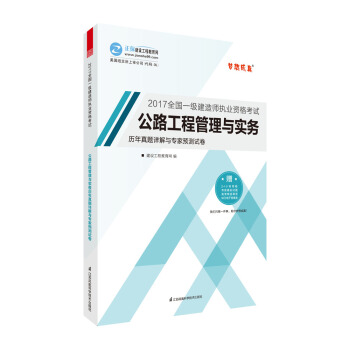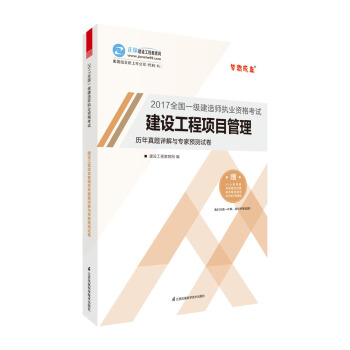具体描述
内容简介
《图解人类景观:环境塑造史论(修订版)》是一部被誉为景观建筑师必读的经典著作,也是景观学、风景园林及相关专业的本科生、研究生应备的教科书。全书共分两部分:第一部分完整地介绍了从史前到17世纪末的人类代表景观。作者在纵览了28种人类文化现象后,先简短介绍每一种文化或文明的背景,再说明它们是如何以景观的语汇呈现,最后以一系列的图片证明。古老的文明地区,如古代美索不达米亚、古希腊、古罗马、中国、古印度、哥伦布之前的美洲世界及文艺复兴后的西方世界等,都是《图解人类景观:环境塑造史论(修订版)》的探讨范围。第二部分介绍了现代景观的演进。从18世纪西方的古典主义、中国学派、英国式流派,到19世纪欧洲大陆、不列颠群岛、美国的代表性人类景观建筑,以及20世纪东西方人类景观的对比及发展,全面介绍了人类景观的演进。在此基础上,简要分析了世界景观设计的发展趋势及迈向人文主义的景观造园艺术。
作者简介
刘滨谊,1957年4月生,1978年入同济大学,1983年毕业于建筑系建筑学专业;继之,师从中国知名建筑师冯纪忠教授,先后于1986年获工学硕士学位、1989年获博士学位,是中国培养的一位景观规划设计学博士。1986-1987年留学美国,1992-1994年再度留美,完成景观环境规划博士后研究。现为同济大学景观与园林规划设计学科教授,同济大学风景科学研究所所长,同济大学建筑城规学院景观学系系主任、教授、博士生导师,美国弗吉尼亚州立大学客座教授,中国风景园林学会理事,国际景观生态学会理事,美国景观规划设计学会终身荣誉会员。
迄今,已出版《风景景观工程体系化》《图解人类景观——环境塑造史论》《现代景观规划设计》等学术专、译著12部,发表论文240余篇;负责完成国家自然科学基金项目5项、部委科研项目5项,以及百余项景观规划与设计工程项目。
刘滨谊教授率先开辟了景观规划设计学学科领域的理论研究、高技术应用、专业教育及工程实践,创立了风景景观工程体系、提出了COE人类聚居环境工程体系及景观规划设计三元理论。
内页插图
精彩书评
★综观历史,人们通过塑造环境,来表达或象征某种理念一一力量、秩序、舒适、和谐、愉快、神秘。这些理念经由不同尺度及组合形式,在小庭院以至于完整的城市设计中得以呈现。作者独具慧眼,察觉出这些设计上的不同,并将这些形式有机地联系起来。
“人类景观”是在某一特定时期对环境的人为塑造,其形式取决于当时的社会文明,因此,想要完整地解释人类景观,不仅要从历史的角度去分析,还要以哲学、宗教的观点去认识。这是一部景观建筑师必读的著作,同时也是对环境改善工作有兴趣的人士必备的教科书一一很明显,这部著作本身就是引人关注的环境事件。
——Designs
★令人惊叹的是,本书对世界范围人造景观的产生、历史及未来,竟然都作了透彻的研究。
——Daily Telegraph
★这是一部内容深刻,触角广泛的著作。
——Financial Timps
目录
修订版序
译者序
导言 景观与文明
第一部分 从史前到17世纪末
一、发源
罗斯卡西 卡劳尼克 斯通赫格 奥夫克顿 复活岛
中部文明
二、从西亚到穆斯林的征服
乌尔 巴比伦 玻塞波利斯 特西芬
三、伊斯兰世界:西亚
巴格达 萨马腊 布尔萨 君土坦丁堡 伊斯法罕
四、伊斯兰的向西扩张:西班牙40
科尔多瓦 格拉纳达
五、伊斯兰的向东扩张:莫卧儿帝国的印度
德里 克什米尔 亚格拉
东方文明
六、古印度
桑契 波罗达罗 依拉 摩摩罗普罗 吴哥
七、中国
苏州 杭州 北京 长城
八、日本
富士山 奈良 京都
九、哥伦布之前的美洲
狄奥提瓦康谷班 帕连克 蒙特埃卜
西方文明:从埃及到文艺复兴
十、埃及
吉萨金字塔 卡拉克 卢克索
十一、古希腊
迈西尼底罗斯代尔菲 奥林匹亚 雅典卫城
十二、古罗马帝国
堤伏利 庞特·杜·伽得 庞贝城 帕加玛卫城 杰拉西城 巴尔贝克城
十三、欧洲中世纪
瑞福克斯修道院 阿斯日 维热莱 布鲁日 剑桥
十四、意大利:文艺复兴
凯菲吉奥罗 堤伏利 兰特别墅 圆厅别墅
十五、意大利:矫饰主义和巴洛克
博玛措 卡坡尼别墅 干布瑞尔别墅 埃索拉贝拉 加措尼
十六、法国:16和17世纪
查那赛 沃克斯园 香提利 凡尔赛
十七、西班牙、德国、英格兰、荷兰:16和17世纪
塞维利亚 赫尔布伦 海德堡 汉普顿宫廷 格林威治
第二部分 现代景观的演进
18世纪
十八、西方的古典主义风格
维也纳 卡尔斯鲁厄 威廉姆斯霍尔 圣彼得堡 波茨坦 华盛顿
十九、中国学派
颐和园 北京 凡尔赛 乔特宁霍姆公园 普希金宫苑
二十、英国式流派
霍华德城堡 切斯威克府邸 罗珊姆花园 白金汉的斯道园 斯杜尔海德园 潘恩歇尔 巴斯市
19世纪
二十一、欧洲大陆
马斯科领地 纽茨温斯顿庄园 维也纳 巴黎
二十二、不列颠群岛
摄政公园 锡利群岛 斯考特内城堡 别塔尔夫农庄 霍兰德公园
芒斯提德森林波 德能特园
二十三、美国
中央公园 纽约 希望公园 芝加哥世界博览会
20世纪:1900-1945年
二十四、欧洲
马希考特 巴赛隆纳 斯德哥尔摩 韦尔文 阿赫斯鲍斯公园
二十五、美洲诸国
华盛顿 威斯彻斯特公园系统 落水山庄 田纳西流域 沼泽地
20世纪:1945-1986年
二十六、西半球:新世界
里约热内卢 巴西利亚 墨西哥城 亚特兰大 波士顿 洛杉矶 巴法罗
二十七、东半球:古老世界
哈娄 塔匹拉 倡第伽 布鲁第斯春德 乌比诺大学 哥娄斯初普医院 朗香教堂雪梨
二十八、景观设计的诸世界性趋势
萨尔坦·凯布斯大学 春特之火 拉·维莱特 米尔顿 凯因斯城
里斯本古根海姆博物馆 维多利亚公园 多伦多动物园 郎干伽
布瑞恩 大地作品 堪培拉 海柔西玛 墨西哥城尼亚加拉大瀑布 圣地亚戈 撒顿场所 莫丹拉 布列斯卡 卡尔文维斯顿 亚特兰大
后记 迈向人文主义的景观
致谢
前言/序言
修订版:
《图解人类景观一一环境塑造史论》英文原版问世于1975年,之后分别于1987年和1995年修订再版。该书中文译著的出版实在是经历曲折:最初的翻译工作始于1992年,但之后因为出版版权等问题,即便是中国建筑工业出版社都望而却步,以至于在历经了四年翻译之后,直到1996年偶遇当时热心于建筑、城市、风景园林专业书籍出版的田园城市出版社(台湾),该书的中文繁体译著才得以首次在台湾出版,这一年,也正是该书原著作者杰弗瑞·杰里柯先生逝世之年;当时,面临迅速出现的中国风景园林社会需求,1000册的印量实在是杯水车薪。此后,译者一直力图推进再版,但一等就是10年!尽管在这10年经历了风景园林专业取消、学科教育受阻等诸多不顺,但是在多方的努力之下,尤其要感谢同济大学出版社,感谢当时的姚建中副社长的鼎力推进,该书的中文简体译版终于在2006年得以在同济大学出版社出版。对于此时中国蓬勃发展、势不可挡的风景园林事业,从理论研究者到工程实践者,从研究生到本科生,行业内外对于该类书籍的需求可想而知,故而该书简体版首印后旋即销售一空。原本形势一片大好,可结果却是无法加印。原因是该书英文原版著作权方所指定的新加坡驻上海印刷厂在倒闭搬迁之时,竟然将该书中文译本印版全部“丢失”,版权、版税谈判,印版制作,等等,一切都需重头再来。如此一等,2006-2015年,转眼竟然又是一个十年!对于中国风景园林事业,以风景园林成为一级学科为标志,这十年中所发生的一系列巨变,众所周知,有目共睹。面对翘首以盼的广大读者,特别是近百所风景园林院系的师生们,作为风景园林教育工作者,译者的焦虑之心难以言表。所以,接近十年之后,本书得以再版实在是亡羊补牢,为时未晚,可喜可庆啊!
本次再版的修订工作主要包括:订正一些译名上的差错,统一了一些时间上的表述;对一些不符合现代汉语表述习惯的句子进行了适当改译。诚然,对于如此内涵丰富、思考深刻的英文原著的翻译,风景园林专业人士的需求已超越了常规标准,所需要的是在“信达雅”的基础之上,一个对于风景园林学科专业不断理解、思考、判断、修正的过程。译者相信,随着中国风景园林事业的深入发展,读者同行对于原著和本译著的理解也将日益深化;译者诚恳地希望,广大的读者同行们在这一不断深化理解的同时,能够对本译著中翻译的不妥之处予以批评指正,以求随着中国风景园林事业的发展壮大,该书的中文译著也不断地日趋完美。
刘滨谊
2015年7月于同济大学
图解人类景观:环境塑造史论(修订版) 一本深入探索人与自然互动演变历程的史诗画卷 《图解人类景观:环境塑造史论(修订版)》是一部跨越数万年时光的宏大叙事,它以令人惊叹的图文结合方式,追溯了人类文明如何以独特的方式介入、改造并深刻影响地球景观的历程。本书不仅仅是一部历史的编年史,更是一次关于我们如何走到今天、以及我们如何塑造所处世界的深刻哲学思考。作者以其渊博的学识和敏锐的洞察力,将看似抽象的环境变迁与具体的历史事件、社会发展、技术进步紧密联系起来,呈现出一幅波澜壮阔的人类与环境相互作用的壮丽画卷。 一、 回溯史前:从渺小的足迹到初步的改造 本书的开篇,将我们带回遥远而神秘的史前时代。我们看到,早期人类作为一个与自然和谐共生的物种,其足迹微乎其微,对环境的影响也相对局限。然而,随着认知能力的提升和工具的发明,人类开始展现出初步改造环境的潜能。火的发现,不仅是文明的曙光,也意味着人类开始大规模地清理植被,为生存和活动腾出空间。游牧的生活方式,虽然对环境的扰动较大,但其周期性的迁移模式,也使得生态系统能够获得一定的恢复。 本书将细致地描绘早期人类的狩猎采集活动,以及这些活动如何巧妙地适应并利用当时的自然条件。石器、骨器等工具的演变,不仅反映了人类智慧的进步,也标志着人类改造自然的手段日益多样化。对于一些关键的史前技术,如农业的起源,本书将通过详尽的图解进行剖析,展示人类如何从被动适应自然,转变为主动参与到农作物的培育和土地的耕种中。这不仅仅是食物来源的变革,更是人类与土地关系的一次根本性重塑,它导致了定居生活方式的出现,进而催生了村落和早期的社会结构。 二、 文明的摇篮:早期农业社会与景观的初步塑形 随着农业的兴起,人类的景观塑造能力得到了极大的提升。本书将重点关注那些孕育了早期伟大文明的地区,如两河流域、尼罗河谷、印度河流域以及黄河流域。在这里,人类不再仅仅是被动的接受者,而是成为了积极的塑造者。 Irrigation and water management emerge as pivotal themes. We will see how ancient civilizations, driven by the need for reliable water sources to sustain their burgeoning populations and intensive agriculture, developed sophisticated systems of canals, reservoirs, and dams. These feats of engineering not only transformed arid landscapes into fertile breadbaskets but also fundamentally altered riverine ecosystems, influencing flood patterns, sedimentation rates, and the very flow of water. The construction of these monumental waterworks often required immense social organization and labor mobilization, laying the groundwork for more complex societal structures. The clearing of forests for agriculture and fuelwood also becomes a significant aspect of this era. As settlements grew, so did the demand for land and resources. This led to widespread deforestation, which in turn had profound environmental consequences, including soil erosion, desertification, and changes in local climate. The book will likely illustrate these processes with archaeological evidence, such as pollen analyses and sediment core data, to reconstruct the environmental impact of early civilizations. Furthermore, the rise of cities marks a new phase in human-environment interaction. Urbanization concentrates human populations and their demands on resources. The construction of cities involved extensive quarrying of stone and timber, the creation of waste disposal systems (or lack thereof), and the development of new forms of infrastructure. The very morphology of cities – their street layouts, public spaces, and defenses – reflects a deliberate sculpting of the land to meet human needs and desires. 三、 古典文明的壮丽与隐忧:帝国的扩张与环境的承载力 进入古典时期,以希腊、罗马、中国等为代表的伟大文明,将人类改造环境的能力推向了新的高度。本书将深入探讨这些文明在农业、建筑、交通以及城市规划等领域所取得的辉煌成就。 The Romans, renowned for their engineering prowess, built vast networks of roads, aqueducts, and monumental structures that reshaped the Mediterranean landscape. Their impact on agriculture was also significant, with the development of new farming techniques and land management practices. However, the expansion of Roman power also brought about increased resource extraction and deforestation across their vast empire. The book might explore the environmental legacy of Roman agriculture, including the potential for soil degradation and the long-term effects of their extensive infrastructure projects. In China, the development of sophisticated irrigation systems, such as the Grand Canal, not only facilitated trade and transportation but also dramatically altered riverine landscapes and influenced regional hydrology. The intensive agriculture practiced to feed a massive population likely led to significant deforestation and soil erosion in many areas. The construction of the Great Wall, a monumental defensive structure, also involved massive landscape manipulation and resource consumption. The book will likely address the concept of carrying capacity during this period. As civilizations grew in population and complexity, they placed increasing demands on their natural resources. The environmental consequences of exceeding these limits, such as soil exhaustion, deforestation, and water scarcity, may have contributed to the decline of some ancient empires. The interconnectedness of environmental factors and societal stability will be a key theme explored here. 四、 中世纪的静滞与复苏:区域性的开发与技术的缓慢演进 中世纪的欧洲,在经历了罗马帝国衰落后的动荡之后,逐渐迎来了一个相对平静的发展时期。尽管与古典时期相比,大规模的景观改造活动有所减少,但本书仍将揭示中世纪时期人类在多个层面的环境塑造活动。 The gradual expansion of agriculture into new territories, often through the draining of wetlands and the clearing of forests, continued throughout the medieval period. This "reclamation" of land was crucial for supporting a growing population and for the feudal system. The development of new agricultural tools, such as the heavy plow, also allowed for the cultivation of previously unworkable soils, further altering the landscape. Monastic orders often played a significant role in land management and agricultural innovation during this period. Their estates were often meticulously managed, with the introduction of new crops, crop rotation techniques, and water management practices. The construction of castles, cathedrals, and monasteries themselves involved considerable landscape modification and resource use. The book will also likely touch upon the impact of medieval cities, which, while not as grand as their Roman predecessors, were growing in size and complexity. The demand for building materials, fuel, and food for these urban centers put pressure on the surrounding rural environments. 五、 工业革命的巨变:力量的飞跃与环境的剧烈转型 工业革命无疑是人类与环境关系史上的一个决定性转折点。本书将花费大量篇幅来解析这场革命所带来的前所未有的景观塑造力量。 The advent of steam power, mechanization, and new industrial processes unleashed an unprecedented capacity for resource extraction and transformation. We will see how the mining of coal, iron ore, and other raw materials fundamentally scarred the earth, creating vast open-pit mines, slag heaps, and industrial landscapes. The construction of factories, railroads, canals, and urban centers on a scale never before imagined led to rapid and often uncontrolled urbanization and industrialization. The pollution generated by these industrial activities – from smoky chimneys to contaminated waterways – represents a new and pervasive form of environmental impact. The book might explore the scientific understanding of pollution and its effects during this era, as well as the nascent beginnings of environmental awareness and concern. The transformation of rural landscapes to support industrial populations through intensified agriculture and transportation networks will also be a focus. The demand for raw materials for industry, such as timber for construction and fuel, led to further deforestation. The book could illustrate the stark visual changes to the landscape, from verdant countryside to a patchwork of industrial sites, mines, and rapidly expanding cities. 六、 现代世界的挑战与机遇:全球化、技术与可持续的未来 进入现代,人类改造景观的能力达到了前所未有的程度,其影响也日益全球化。本书将聚焦于20世纪至今的景观演变,探讨科技进步、全球化以及环境意识的兴起所带来的复杂互动。 The expansion of global trade and transportation networks has led to the standardization of agricultural practices and the homogenization of landscapes in many regions. The construction of massive infrastructure projects, such as dams, highways, and airports, continues to reshape the earth's surface on an immense scale. The growth of megacities and the phenomenon of suburban sprawl represent profound changes in land use patterns. The book will undoubtedly delve into the rise of modern environmentalism and the growing awareness of the ecological consequences of human activities. Topics such as climate change, biodiversity loss, resource depletion, and pollution will be discussed in the context of their historical development and their impact on landscapes. The book might explore how scientific understanding of these issues has evolved and how it has influenced policy and public perception. The development of new technologies, from advanced agricultural techniques to renewable energy sources, offers both new challenges and potential solutions for shaping a more sustainable future. The book will likely examine the ongoing tension between economic development and environmental protection, and the complex trade-offs involved in managing our planet's landscapes. 七、 图解的力量:视觉化的叙事与深刻的洞见 贯穿全书的核心特色是其“图解”的叙事方式。本书并非枯燥的文字堆砌,而是通过精心挑选的地图、考古遗址的照片、历史绘画、现代卫星图像以及数据可视化图表,将抽象的历史进程具象化。这些视觉元素并非简单的插图,而是与文字内容相辅相成,共同构建了一个立体而生动的叙事。 每一幅图都经过精心编排,旨在帮助读者更直观地理解文本所阐述的概念。例如,关于早期农业的图解可能展示不同时期的农具演变和土地利用模式;关于罗马水渠的图解会清晰地展示其工程原理和对周边景观的影响;而关于工业革命时期污染的图解则可能通过对比黑白照片和颜色鲜艳的自然风光,来突出环境的剧变。 通过这种图文并茂的方式,本书将复杂的历史和环境议题变得易于理解和消化。读者可以在阅读文字的同时,通过视觉信息获得更深刻的认识,仿佛亲身穿越了不同时代,见证了人类如何一步步地雕刻着我们所居住的世界。本书的修订版,无疑将在此基础上,融入更多最新的研究成果、更丰富的图例和更精湛的视觉呈现,为读者带来一次更加全面、深刻、引人入胜的阅读体验。 《图解人类景观:环境塑造史论(修订版)》是一部面向所有对人类历史、地理环境、以及两者之间复杂关系感兴趣的读者。它既是一部严谨的学术著作,也是一本充满启发性的科普读物,它邀请我们停下脚步,审视我们与地球之间的深刻联系,思考我们作为环境塑造者的责任与未来。
![图解人类景观:环境塑造史论(修订版) [The Landscape of Man Shaping the Environment from Prehistory to the Present Day]](https://pic.windowsfront.com/11794884/564bd8efNd42f6c07.jpg)



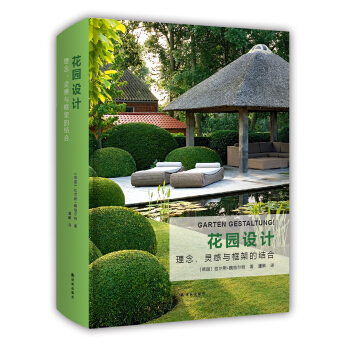
![人文主义时代的建筑原理(原著第六版) [Architectural Principles In The Age Of Humanism] pdf epub mobi 电子书 下载](https://pic.windowsfront.com/11828214/567d207aN65d48a3b.jpg)
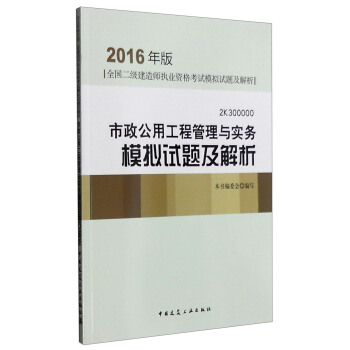
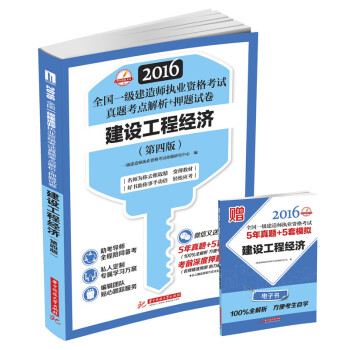
![建筑设计基础 [Architectural Design Basics] pdf epub mobi 电子书 下载](https://pic.windowsfront.com/11852686/56931c4cNfca23017.jpg)
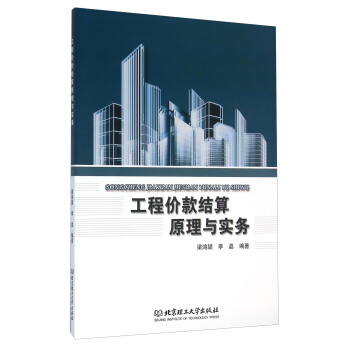
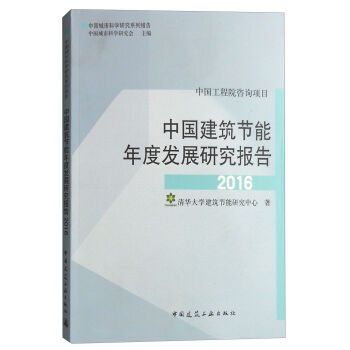

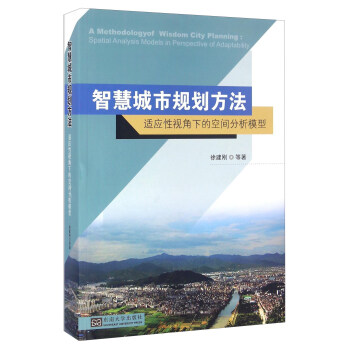

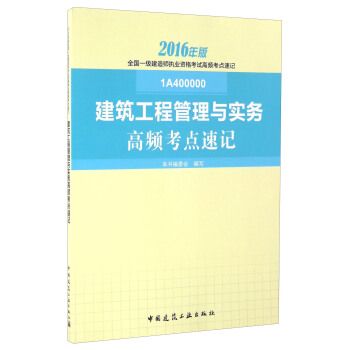



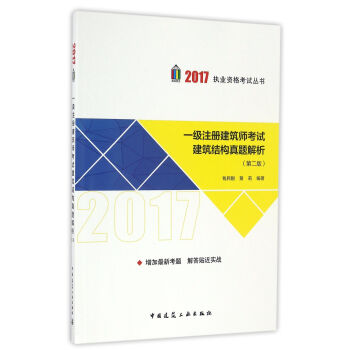
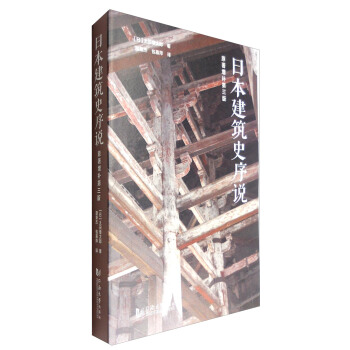
![中华人民共和国国家标准(GB/T 50312-2016):综合布线系统工程验收规范 [Code for Engineering Acceptance of Generic Cabling System] pdf epub mobi 电子书 下载](https://pic.windowsfront.com/12056369/58f49002N82c616cb.jpg)
